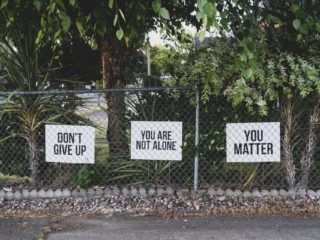The Subtle Art of Mindfulness.
Have you ever complained to someone of a sore neck or a headache or just not being in the mood and had “you just need to relax” thrown back at you? You probably just dismissed it in no time, thinking it’s just something people say when they don’t have anything beneficial to say – like “cheer up” when you’re upset. Like it’s that easy, right? Wrong – It is.
The only thing asked of you is to change your perception about things. In order to relax, the practice of meditation can be the solution for whether it’s your physical or emotional distress.
As the founder of the Mindfulness-Based Stress Reduction (MBSR) Course, Jon Kabat-Zinn puts it: “Mindfulness as a form of meditation is the intentional and non-judgmental focus of one’s attention to their own emotions, thoughts, and sensations occurring in the present moment.”
Mindfulness stems from Vipassana meditation, which in the Buddhist tradition means ‘insight into the true nature of reality’. By slowly inhaling and exhaling and engaging your whole body in the action of breathing, you are slowing down your heartbeat. And by doing that, blood flow starts to equalize and your senses start to awaken. Here is where your thoughts start to seem too loud.
You need to tame your drunk monkeys.
You need to learn how to tame your drunk monkeys.
It has been said that the human mind is like a room full of drunk monkeys – jumping around, chattering endlessly, never seeming to rest. All of us are nurturing a roomful of intoxicated chimpanzees, or orangutans, or even gorillas, and we need to learn to accept them. They just need to be tamed. And how do we do that? We single them out one by one, know them, listen to them and understand them. Understand what makes them tick and their behavioral patterns.
Detachment
Detachment, by theory and through practice is achieved only when you accept a sensation, a feeling, a phase… fully. According to Sociology Professor Morrie Schwartz, the subject of the best-selling book Tuesdays with Morrie by Mitch Albom, “By throwing yourself into [said] emotions, by allowing yourself to dive in, all the way, over your head even, you experience them fully and completely. You know what pain is. You know what love and grief are. And only then can you say ‘all right. I have experienced that emotion. I recognize that emotion. Now I need to detach from that emotion for a moment.
Same for loneliness [for example]: you let go, let the tears flow, feel it completely – but eventually be able to say, ‘All right, that was my moment with loneliness. I’m not afraid of feeling lonely, but I’m going to put that loneliness aside and know that there are other emotions in the world, and I’m going to experience them as well.”
And by adopting this skill of detachment in your meditation practices, you carry around a refuge no matter where you are or what you’re doing. Furthermore, you learn how to take it slow, ingest new information with a calm mind, and therefore make generally better, sounder decisions. You learn how to appreciate and see beauty in trivial details. You master meditation, and you have an escape to run to whenever you need it.
According to Gurudev Sri Sri Ravi Shankar, an Indian Guru, “In ancient times, meditation was used for enlightenment; for finding the self. To overcome misery and problems. To improve one’s abilities,” and to put things in perspective.
What exactly is meditation? In simple words, it is the art of doing (and thinking) nothing. It doesn’t require a certain time or place. You can meditate anywhere, anytime and in any condition you like. It is not concentration – it is deconcentration.
All it needs you to be is present.
“To me, meditation is not a practice, rather than a state of being. It’s a present mind. It’s a full heart. I define meditation as: being one with whatever it is that you are doing; being so invested in the thought or action that is taking place that all other thoughts fall out of mind,” Nada Borhan, a self-proclaimed advocate for self-care, mental health and emotional wellbeing, and a lover of What Is, tells us.
It could be the first thing you do in the morning getting ready for what’s coming ahead, or in the middle of a long and stressful day, or the last thing you do to unwind and get yourself ready for a good night’s sleep. Some take this quiet time out in a cross-legged position, some do it while they’re driving, some even do it while doing the dishes.
Focus on your senses; what you hear, what you see, what you smell, what you taste and what you touch. In the present moment.
Focus on one sensation at a time, like you’re zooming into one completely.
If you’re sitting by the beach, for example, and you can hear the waves, see them crash and feel the sand underneath your toes, try focusing on what you hear first. Closing your eyes and listening to everything happening around you, try to accent and then eliminate one sound at a time, but only after giving each their time; the buzz of the wind, the whispers of people nearby, or the crackling of a lighter flame. And so on, with all your senses. Until you’re left with your thoughts. And then do the same to those too.
“I have found that investing all my being into one thought at a time helps the mind forget to drift into certain thoughts… on what will happen next or what has once happened – the spaces where anxiety, stress, and regret live – so that the only thing happening inside the mind is what’s being received from the outside through our senses,” Borhan says.
Accepting that it is what it is is a step towards mindful bliss.
By mastering the art of detachment, and succeeding at quieting the overactive mind, you allow your mind to fully experience itself in its truest, purest, most natural state: that of stillness. Focusing – and practicing on focusing – on the now rather than the what-ifs and could’ve-beens, is the ultimate step up towards attaining the power of positive thinking. It could take time and constant reminders to emphasize the good and accept the bad and let it go, but the benefits are worth it.
A calmer, clearer mind, lower blood pressure, good concentration, an overall rejuvenation of the mind, as well as lower levels of blood lactate responsible for anxiety attacks, are among the numerous benefits to a regular practice of meditation. It also decreases tension-related pain such as headaches or muscle and joint issues, so your friend might actually be right!
When you take a break from what you’re doing to merely focus on the present and channel your energy towards positive thinking, and when you do that on a consistent basis, it becomes a habit. And with time, you know how to quiet down your constantly churning mind and harness it right to find that you are the true authority over your thoughts and impulses. That everything taking place in your mind are tools only you are in control of, not the other way round.
And on that note, Gurudev Sri Sri leaves us with the reminder:
“The cause of distress is set concepts in the mind that things should be a certain way.”
Have something to say? Join the conversation in our Facebook group!
Feel free to subscribe to our weekly newsletter to get the latest releases on all our exclusive articles, including celebrity guests sharing their take on Mental Health and Wellbeing.








